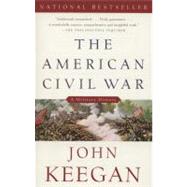
Note: Supplemental materials are not guaranteed with Rental or Used book purchases.
Purchase Benefits
What is included with this book?
| List of Maps | p. vii |
| Introduction | p. xi |
| North and South Divide | p. 3 |
| Will There Be a War? | p. 24 |
| Improvised Armies | p. 38 |
| Running the War | p. 58 |
| The Military Geography of the Civil War | p. 67 |
| The Life of the Soldier | p. 74 |
| Plans | p. 82 |
| McClellan Takes Command | p. 113 |
| The War in Middle America | p. 153 |
| Lee's War in the East, Grant's War in the West | p. 163 |
| Chancellorsville and Gettysburg | p. 179 |
| Vicksburg | p. 204 |
| Cutting the Chattanooga-Atlanta Link | p. 221 |
| The Overland Campaign and the Fall of Richmond | p. 237 |
| Breaking into the South | p. 259 |
| The Battle off Cherbourg and the Civil War at Sea | p. 280 |
| Black Soldiers | p. 289 |
| The Home Fronts | p. 302 |
| Walt Whitman and Wounds | p. 313 |
| Civil War Generalship | p. 321 |
| Civil War Battle | p. 333 |
| Could the South Have Survived? | p. 344 |
| The End of the War | p. 348 |
| Notes | p. 367 |
| Bibliography | p. 371 |
| Acknowledgements | p. 375 |
| Index | p. 377 |
| Table of Contents provided by Ingram. All Rights Reserved. |
The New copy of this book will include any supplemental materials advertised. Please check the title of the book to determine if it should include any access cards, study guides, lab manuals, CDs, etc.
The Used, Rental and eBook copies of this book are not guaranteed to include any supplemental materials. Typically, only the book itself is included. This is true even if the title states it includes any access cards, study guides, lab manuals, CDs, etc.
Excerpted from The American Civil War: A Military History by John Keegan
All rights reserved by the original copyright owners. Excerpts are provided for display purposes only and may not be reproduced, reprinted or distributed without the written permission of the publisher.